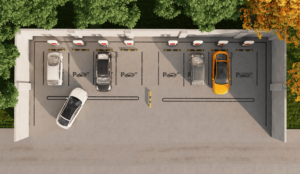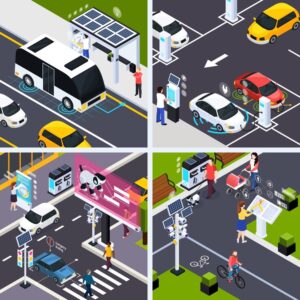How Smart Mobility is Transforming Urban Landscapes: 4 Powerful Examples
Smart mobility is revolutionizing urban environments worldwide, integrating cutting-edge technologies and sustainable solutions to improve transportation efficiency while reducing environmental impact.
This article explores how smart mobility is reshaping cities, presenting four remarkable case studies and highlighting the contribution of companies like Mobipar in this transformation.
What is Smart Mobility?
Smart mobility refers to advanced transportation solutions leveraging technology, data, and sustainability to optimize urban transit systems. Key elements include:
-
Intelligent Transportation Systems (ITS): Real-time traffic management and communication technologies to reduce congestion.
-
Electric Vehicles (EVs): Promoting clean energy transportation with electric cars, buses, and bikes.
-
Shared Mobility Services: Encouraging car-sharing, bike-sharing, and ride-hailing to minimize private car dependency.
-
Autonomous Vehicles: Enhancing safety and efficiency through self-driving technology.
How Smart Mobility is Transforming Cities
The integration of smart mobility significantly impacts urban life:
✅ Less Traffic Congestion: AI-powered traffic systems optimize vehicle flow.
✅ Lower Carbon Emissions: EVs and reduced fuel dependency cut CO₂ levels.
✅ Optimized Urban Space: Reduced parking needs allow for green areas and pedestrian-friendly spaces.
✅ Enhanced Public Transport: Digital integration makes buses and trains more efficient and user-friendly.
4 Remarkable Case Studies in Smart Mobility
1. Helsinki, Finland: MaaS and the Whim App
Helsinki introduced Mobility-as-a-Service (MaaS) via the Whim app, integrating buses, trams, taxis, bikes, and car rentals into a single digital platform. This initiative resulted in:
✔️ A 12% increase in public transport use
✔️ A 9% decrease in private car ownership
(Source)
2. Seville, Spain: Smart Urban Innovation
The PCT Cartuja project integrates IoT technology and renewable energy into a tech hub, enhancing transportation sustainability while fostering collaboration between academia and industry.
(Source)
3. Pontevedra, Spain: The Walking City
Pontevedra revolutionized urban mobility by prioritizing pedestrians over vehicles. The city introduced Metrominuto, a walking map that promotes walking as a primary mode of transport, leading to:
✔️ Traffic-free city center
✔️ Drastically improved air quality
(Source)
4. Copenhagen, Denmark: The “Five-Minute City”
Copenhagen’s Nordhavn district applies the “Five-Minute City” concept, ensuring essential services are accessible within a five-minute walk. This model significantly:
✔️ Encourages walking and cycling
✔️ Reduces car dependency and fosters community engagement
(Source)
The Role of Mobipar in Smart Mobility
Mobipar plays a key role in optimizing urban transportation through smart parking solutions and data-driven mobility management. Some of its core solutions include:
-
Smart Parking Systems: Real-time parking availability reduces congestion and emissions.
-
EV Charging Integration: Seamless charging station integration for electric vehicles.
-
Urban Mobility Data Analytics: AI-powered insights help cities optimize traffic flow.
Mobipar contributes to smarter, cleaner, and more efficient urban environments, aligning with modern sustainable mobility trends. Link
Conclusion: The Future of Urban Mobility
The transition to smart mobility is reshaping urban landscapes, making cities more efficient, livable, and environmentally friendly. By implementing intelligent transportation systems, promoting sustainable mobility, and adopting innovative urban planning, cities can successfully tackle modern transportation challenges.
🚀 Key Takeaways:
✔️ AI-driven systems reduce traffic and emissions
✔️ EVs and smart transport enhance sustainability
✔️ Innovative models like MaaS and pedestrianization improve urban life
With companies like Mobipar leading the way, the future of smart mobility looks promising. As urban populations continue to grow, adopting technology-driven, sustainable solutions will be crucial for a better tomorrow.
Moreover, the shift towards connected, data-driven cities will further revolutionize urban mobility. Governments and private sectors must collaborate to invest in smart infrastructure, expand EV charging networks, and improve public transportation accessibility. By fostering a multi-modal transport ecosystem, cities can encourage car-free lifestyles, reducing congestion and improving air quality.
As we move forward, embracing AI, automation, and green technology will be key to building resilient, adaptive urban spaces. The next decade will define how mobility evolves, and those who invest in innovation today will shape the cities of tomorrow.


